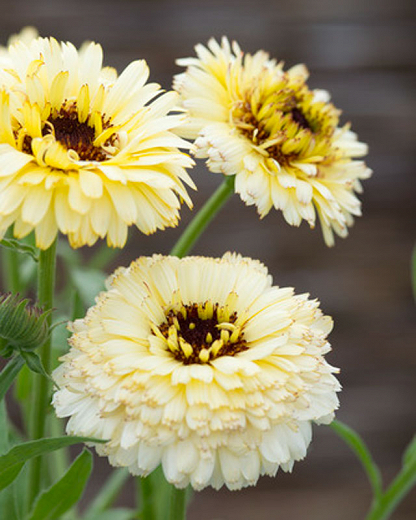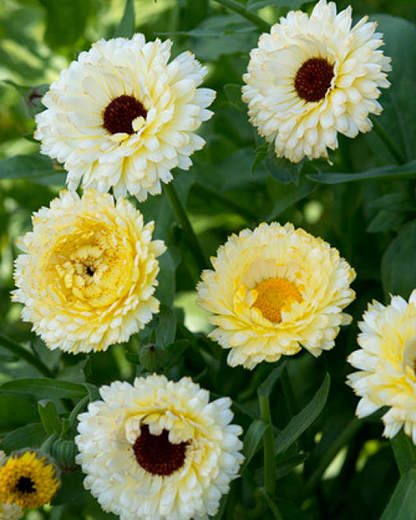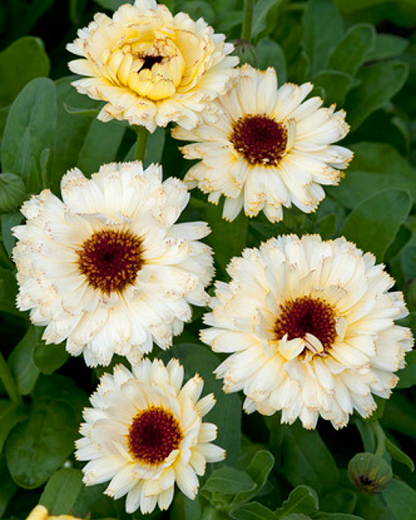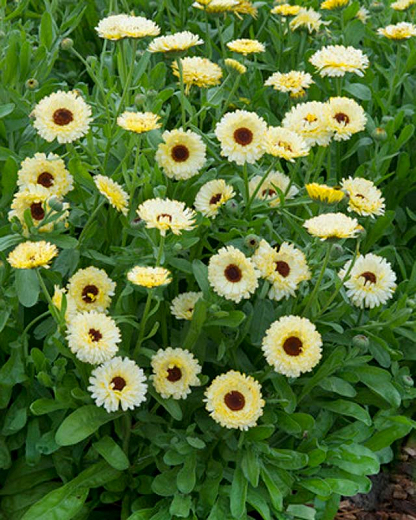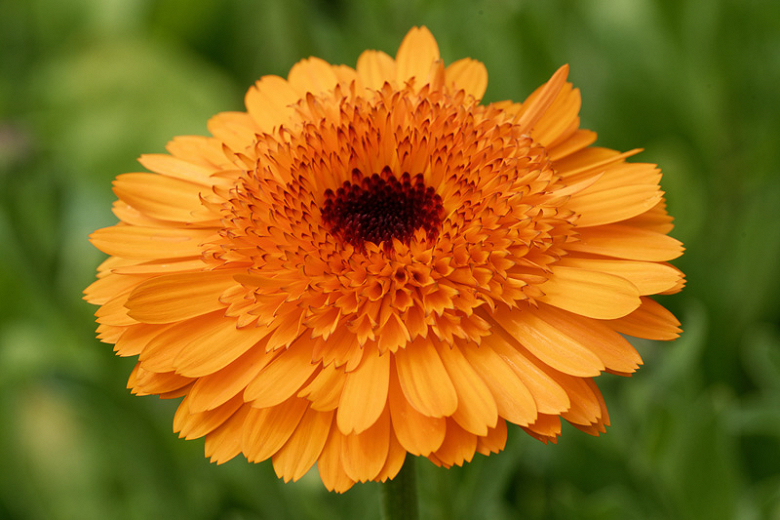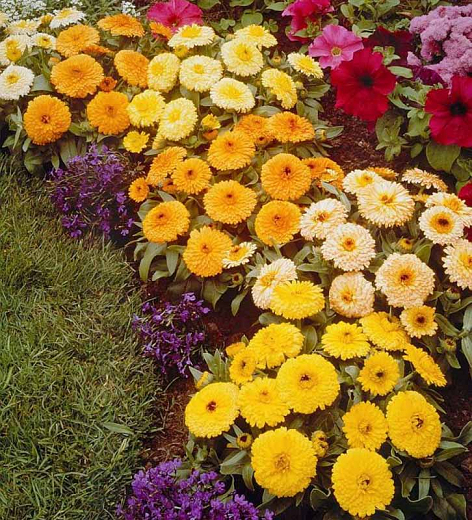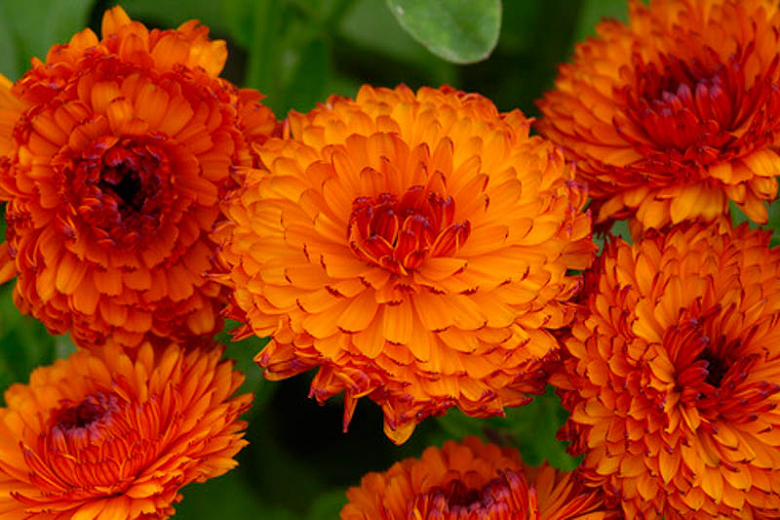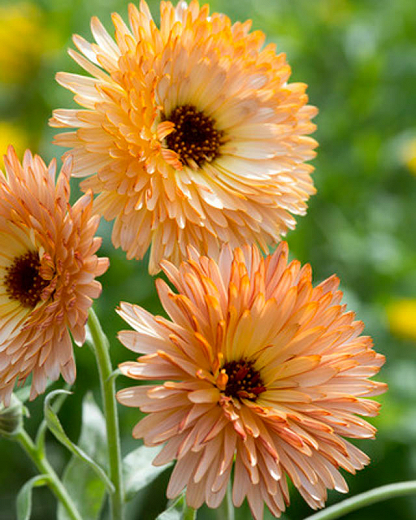Calendula officinalis Ivory Princess (Pot Marigold)
Calendula officinalis ‘Ivory Princess’ (Pot Marigold) is a compact, bushy, hardy annual with aromatic, dark green foliage and large, semi-double, creamy white daisy-like flowers, 3 in. across (7 cm) with butter yellow reverses. Some flowers display dark centers while others display yellow centers. Blooming from late spring until the first frost, Pot Marigold is easy to grow and maintain. It has a wide range of uses and every garden should have Calendula in it.
Calendula officinalis 'Ivory Princess' (Pot Marigold) is a compact, bushy, hardy annual with aromatic, dark green foliage and large, semi-double, creamy white daisy-like flowers, 3 in. across (7 cm) with butter yellow reverses. Some flowers display dark centers while others display yellow centers. Blooming from late spring until the first frost, Pot Marigold is easy to grow and maintain. It has a wide range of uses and every garden should have Calendula in it.
- Grows up to 24-30 in. tall (60-75 cm) and 12 in. wide (30 cm). Pot Marigold will self-seed if not deadheaded, without becoming invasive.
- Performs best in full sun in a light, poor to moderately fertile, well-drained soil. Some afternoon shade is tolerated in hot summer areas. Because Calendula are cool-season flowers, they often sulk when summer sets in, especially in hot-weather areas.
- Water regularly until the plants are established. Mature plants thrive on only occasional watering. Drought tolerant once established.
- Pot Marigold is a great choice for beds and borders, edgings, as a ground cover, or in mass plantings. It is also suitable for cut flower gardens and containers and looks great in the cottage garden.
- Calendula is a wonderful companion plant in the garden. Butterflies, bees, and other pollinators and beneficial insects are drawn to the flowers, making them a useful addition to the vegetable garden.
- In addition, Calendula is a trap crop, trapping pests such as aphids, whiteflies, and thrips by exuding a sticky sap (resin) that they find more appealing and delicious than nearby vegetable crops.
- Calendula flowers can be harvested to make brightly colored bouquets. They can be used as a medicinal herb as they possess wound-healing and local anti-inflammatory properties.
- The leaves and petals of this plant are edible. The leaves are often added to salads and the fresh petals can be used as a garnish or seasoning.
- Seeds can be sown directly in the garden just before the last frost date, but for earlier bloom start seeds indoors about 6-8 weeks before the last frost. Successive sowings will provide fresh, blooming plants throughout the season.
- If flowering performance dwindles in midsummer, cut back severely.
- Young plants may be pinched back to encourage compact bushy growth. Deadhead spent flowers to promote additional bloom. Cut back to ground level after flowering.
- Few insects or diseases bother Pot Marigolds. Keep an eye out for aphids, powdery mildew, and occasional cucumber mosaic virus. Deer and rabbits tend to avoid Calendula.
- Calendula officinalis is native to Southern Europe.
Requirements
| Hardiness | 2 – 11 |
|---|---|
| Heat Zones | 1 – 6 |
| Climate Zones | 1, 1A, 1B, 2, 2A, 2B, 3, 3A, 3B, 4, 5, 6, 7, 8, 9, 10, 11, 12, 13, 14, 15, 16, 17, 18, 19, 20, 21, 22, 23, 24, A2, A3, H1 |
| Plant Type | Annuals, Herbs |
| Plant Family | Calendula – Pot Marigold |
| Exposure | Full Sun, Partial Sun |
| Season of Interest | Spring (Late)Summer (Early,Mid,Late)Fall |
| Height | 2' – 3' (60cm – 90cm) |
| Spread | 1' (30cm) |
| Spacing | 12″ (30cm) |
| Water Needs | Average |
| Maintenance | Low |
| Soil Type | Chalk, Loam, Sand |
| Soil pH | Acid, Alkaline, Neutral |
| Soil Drainage | Well-Drained |
| Characteristics | Dried Arrangements, Cut Flowers, Showy |
| Tolerance | Deer, Rabbit |
| Attracts | Bees, Butterflies |
| Garden Uses | Beds and Borders, Edging, Ground Covers, Patio and Containers |
| Garden Styles | City and Courtyard, Informal and Cottage, Traditional Garden |
